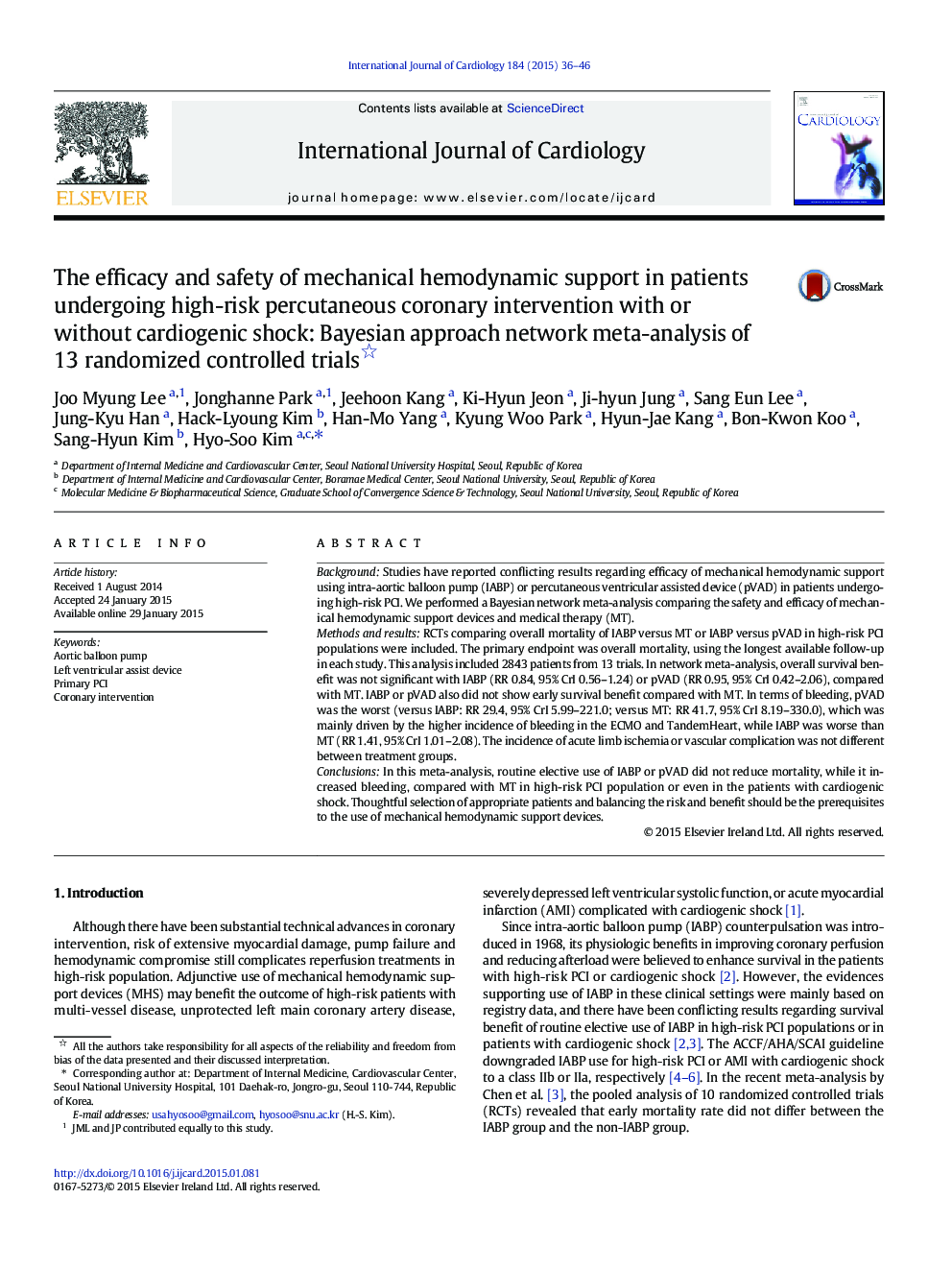| کد مقاله | کد نشریه | سال انتشار | مقاله انگلیسی | نسخه تمام متن |
|---|---|---|---|---|
| 5968274 | 1576168 | 2015 | 11 صفحه PDF | دانلود رایگان |
- Survival benefit was not significant with IABP or pVAD compared to medical therapy.
- In terms of bleeding, pVAD was the worst compared to IABP and medical therapy.
- Higher incidence of bleeding was mainly driven by ECMO and TandemHeart.
- Risk and benefit of the MHS should be carefully considered and individualized.
BackgroundStudies have reported conflicting results regarding efficacy of mechanical hemodynamic support using intra-aortic balloon pump (IABP) or percutaneous ventricular assisted device (pVAD) in patients undergoing high-risk PCI. We performed a Bayesian network meta-analysis comparing the safety and efficacy of mechanical hemodynamic support devices and medical therapy (MT).Methods and resultsRCTs comparing overall mortality of IABP versus MT or IABP versus pVAD in high-risk PCI populations were included. The primary endpoint was overall mortality, using the longest available follow-up in each study. This analysis included 2843 patients from 13 trials. In network meta-analysis, overall survival benefit was not significant with IABP (RR 0.84, 95% CrI 0.56-1.24) or pVAD (RR 0.95, 95% CrI 0.42-2.06), compared with MT. IABP or pVAD also did not show early survival benefit compared with MT. In terms of bleeding, pVAD was the worst (versus IABP: RR 29.4, 95% CrI 5.99-221.0; versus MT: RR 41.7, 95% CrI 8.19-330.0), which was mainly driven by the higher incidence of bleeding in the ECMO and TandemHeart, while IABP was worse than MT (RR 1.41, 95% CrI 1.01-2.08). The incidence of acute limb ischemia or vascular complication was not different between treatment groups.ConclusionsIn this meta-analysis, routine elective use of IABP or pVAD did not reduce mortality, while it increased bleeding, compared with MT in high-risk PCI population or even in the patients with cardiogenic shock. Thoughtful selection of appropriate patients and balancing the risk and benefit should be the prerequisites to the use of mechanical hemodynamic support devices.
Journal: International Journal of Cardiology - Volume 184, 1 April 2015, Pages 36-46
